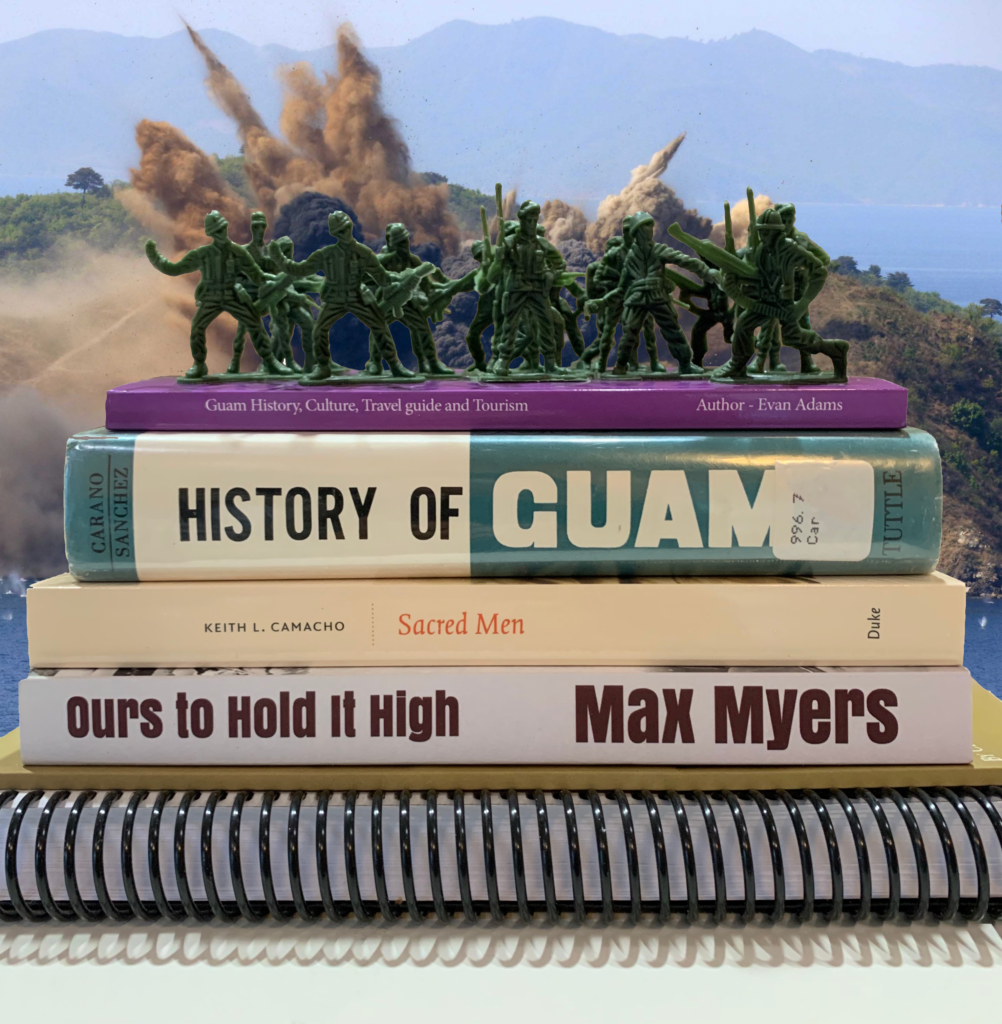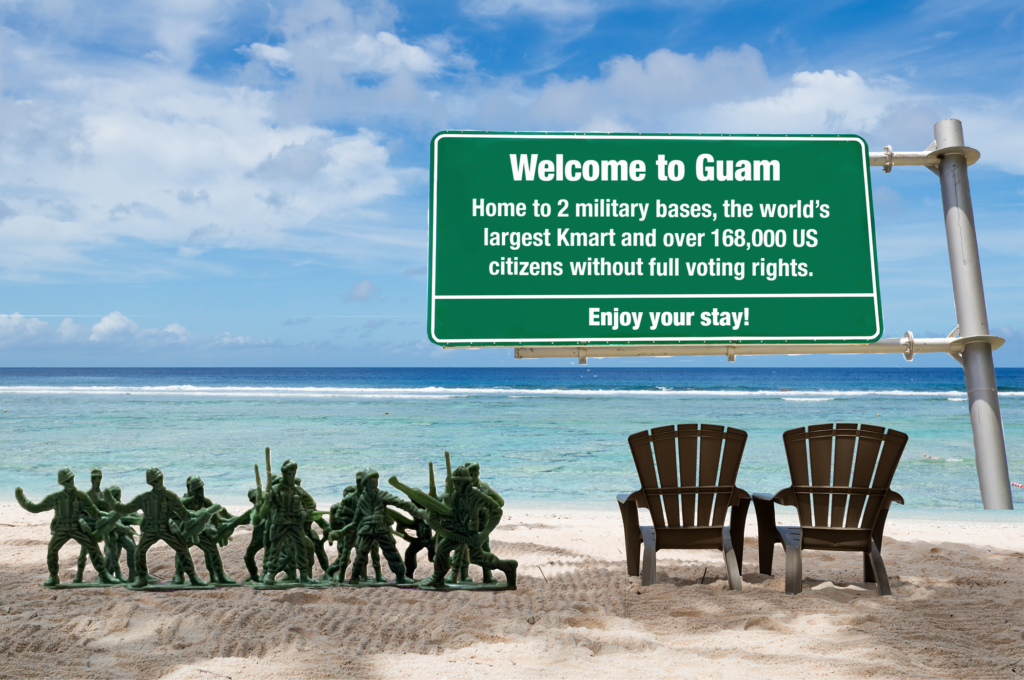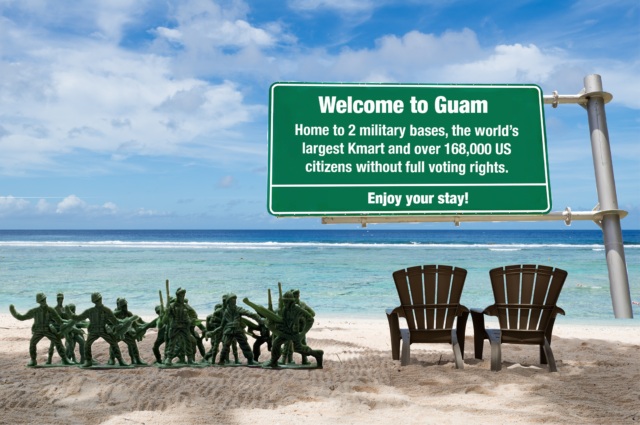
An island territory, Guam is forgettable to the majority of Americans, except during wartimes or when it comes up in the news due to its military bases and proximity to Asia. For example, North Korea threatened to bomb Guam in 2017 when conflict between Donald Trump and Kim Jong Un escalated. Before that, Guam was occupied by Japanese military forces for three years during World War II.
Initially, I hoped to travel to Guam this summer and research what life is like for residents there and the current state of resident-military relations. Due to travel restrictions, I recently narrowed my research question to address the myth of Liberation Day, which is still directly related to militarism, but takes a more historical approach.
I began my research by watching short and long-form documentaries about Guam, including an Untold America installment outlining how Guam came to be a modern-day colony. I also watched The Insular Empire: America and the Marianas Islands, which brought to light the myth of Liberation Day. Liberation Day marks the day that the American military arrived and ousted the Japanese forces that had occupied Guam since 1941. But the U.S. wasn’t liberating the people of Guam, it was retaking their land. Guam had long been under military control, specifically under the control of the Navy. The Insular Empire notes that Chamorros (Native Guamanians) were relocated from the formerly Japanese-run concentration camps to refugee camps while the American military laid claim to Chamorro-owned land and demolished property.
Untold America, an Al Jazeera-produced Youtube series, features interviews with residents of Guam who lost acres of land after their families were forced to sign over ownership to the American military. One man was paid less than $12 per acre for land that would later become Andersen Air Force Base, but that rate, while appallingly low, is unusually high considering that on average the U.S. paid $1 per acre for land they took.
As I continue my research about Guam’s history and the history of the American military presence there, I hope to expand on the work that’s already been done to identify neocolonialism on Guam and in the broader Pacific. The U.S. military has an even more complicated relationship with Kosrae, an island in the Federated States of Micronesia, as well as American Samoa, and even Hawaii’s road to statehood is marked by colonial practices. Confronting American Empire in the Pacific is a crucial part of reckoning with America’s history as a settler-colonial state, a reckoning that is essential as we fight for a more equitable America.

Guam became a US territory after the Spanish-American War in 1898. It wasn’t until the mid-twentieth century that Guamanians were granted citizenship, and residents of Guam still don’t have full voting rights. They cannot vote for president despite enlisting in the military at a higher per capita rate than any US state, and their delegate to the House of Representatives cannot vote on the final passage of legislation.
